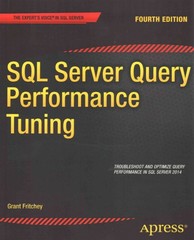Answered step by step
Verified Expert Solution
Question
1 Approved Answer
1 . 9 Use the construction in the proof of The class of regular languages is closed under the concatenation operation. PROOF IDEA We have
Use the construction in the proof of The class of regular languages is closed under the concatenation operation. PROOF IDEA We have regular languagesAandAand want to prove thatAAis regular. The idea is to take twoNFAs,NandNforAandA andcombine them into a newNFANas we did for the case of union, but this timein a different way, as shown in Figure AssignNs start state to be the start state ofN The accept states ofNhaveadditionalepsi arrows that nondeterministically allow branching toNwheneverNis in an accept state, signifying that it has found an initial piece of the inputthat constitutes a string inA The accept states ofNare the accept states ofNonly. Therefore, it accepts when the input can be split into two parts, the firstaccepted byNand the second byN We can think ofNas nondeterministicallyguessing where to make the split. to give the state diagrams ofNFAs recognizing the concatenation of the languages described in
gwthe length ofwis at most and iwevery odd position ofwis a
bwwcontains at least threes and mThe empty set
Use the construction in the proof of The class of regular languages is closed under the star operation.PROOF IDEAWe have a regular languageAand want to prove thatAalsois regular. We take anNFANforAand modify it to recognizeA as shown inthe following figure. The resultingNFANwill accept its input whenever it canbe broken into several pieces andNaccepts each piece.We can constructNlikeNwith additionalepsi arrows returning to the startstate from the accept states. This way, when processing gets to the end of a piecethatNaccepts, the machineNhas the option of jumping back to the start stateto try to read another piece thatNaccepts. In addition, we must modifyNso that it acceptsepsi which always is a member ofA One slightly bad idea issimply to add the start state to the set of accept states. This approach certainlyaddsepsi to the recognized language, but it may also add other, undesired strings.Exercise asks for an example of the failure of this idea. The way to fix it isto add a new start state, which also is an accept state, and which has anepsi arrowto the old start state. This solution has the desired effect of addingepsi to thelanguage without adding anything else. to give the state diagrams ofNFAs recognizing the star of the languages described in
bwwcontains at least threes
jwwcontains at least twos and at most one
m The empty set Outline:
from automata.fanfa import NFA
examplenfa NFA
statesqqq
inputsymbols
transitions
q: : qq
q: : q: q
q: : q: q
initialstateq
finalstatesq
# proba NFA
# NFA for language g: w the length of w is at most
#
# probb NFA
# NFA for language b: w w contains at least three s
#
# proba NFA
# Create an NFA to recognize the language b
#
# probb NFA
# Create an NFA to recognize the language j
#
# probc NFA
# Create an NFA to recognize the empty set language m
#
#you must use this outline
Step by Step Solution
There are 3 Steps involved in it
Step: 1

Get Instant Access to Expert-Tailored Solutions
See step-by-step solutions with expert insights and AI powered tools for academic success
Step: 2

Step: 3

Ace Your Homework with AI
Get the answers you need in no time with our AI-driven, step-by-step assistance
Get Started


